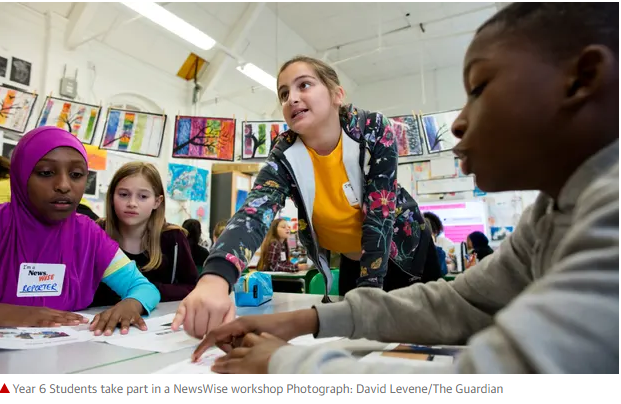By the National Literacy Trust

The rise of digital technology has brought unprecedented change in how media and news are created and experienced. Alongside this has been an increasing recognition of the need to support media and news literacy education across all age groups, with children and young people’s wellbeing and trust in the media and news of particular concern. While many experts advocate for a greater focus on media literacy education in the curriculum, opportunities to critically engage with media and news within the school setting are presently limited[1]. Industry, third-sector organisations and schools are attempting to address this by working in partnership to develop interventions to improve young people’s critical evaluation skills.
What is news literacy?
Many definitions of news literacy exist, and it is perhaps most helpful to consider what news literacy helps us to do. Most researchers agree it should “prepare and empower people to become critical news consumers who can read, understand, analyse, deconstruct, develop, share, and sometimes even create news”[2]. Recent studies emphasise the more practical aspects of news literacy, such as the “news literacy behaviours (NLBs)” observed when people engage critically with news content, representing “the application of news literacy”[3]. NLBs include news consumption, content verification and identification of misinformation.
Why evaluate news literacy?
Evaluation will often serve multiple purposes, including (but not limited to):
- Providing a systematic assessment of what does and does not work in making progress towards intended outcomes (such as changes in attitudes, behaviours or skills)
- Supporting a better understanding of the impact of the intervention on the individuals and groups taking part, including unexpected or unintended outcomes
- Providing insight into the mechanisms underpinning an intervention’s effects, for example, training and implementation
- Improving the impact and quality of an intervention and therefore the outcomes for those it seeks to help
- Determining to what extent resources are being used effectively
- Demonstrating the value of the intervention to schools and funders, potentially supporting better funding and delivery of successful interventions
- Informing those considering whether to run the intervention and the wider sector, including what was less successful so others are less likely to repeat these elements
The latter is perhaps one of the most important contributions of evaluation, and depends on thought being given to sharing findings as widely as possible. Evaluation reports can help others working on similar projects strengthen their approaches, particularly if the project concerned included approaches with a limited evidence base. When designing interventions to support news literacy, those that consider what has gone before will have the advantage of building a foundation on what has already been shown to be effective.
This is why the current randomised control trial of NewsWise, a UNESCO-award-winning news literacy programme run by the Guardian Foundation in partnership with the PSHE Association and the National Literacy Trust, is so exciting. Funded by the Nuffield Foundation and conducted by a team from the Jubilee Centre for Character and Virtues and School of Education at the University of Birmingham, in partnership with the University of Liverpool, the trial will evaluate the impact of the programme on 9 to 11-year-olds’ news literacy, while also testing the associations between news literacy and civic engagement.
To summarise, evaluating educational interventions to measure their effectiveness, demonstrate value and inform future planning is critical. Evaluation helps us learn what works and how impact connects with implementation, and share that with others. Beyond this, it supports our understanding of the mechanisms underpinning an intervention’s effects and its sustainability. In the case of news media literacy, this also has the potential to support active citizenship, participating in democracy and confident navigation of today’s news environment.
If this has persuaded you of the ‘why’, for the ‘how’, a great place to start is the Ofcom Evaluation Toolkit (link).
[1] See, e.g. Cannon et al., (2022)
Image credit: David Levene
Leave a comment